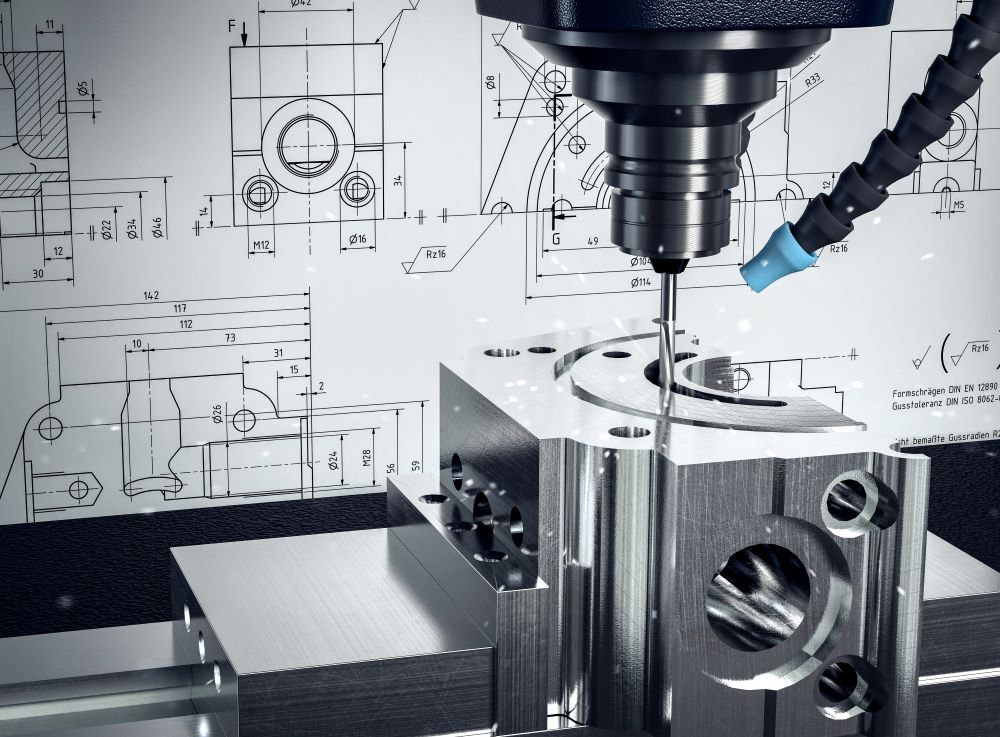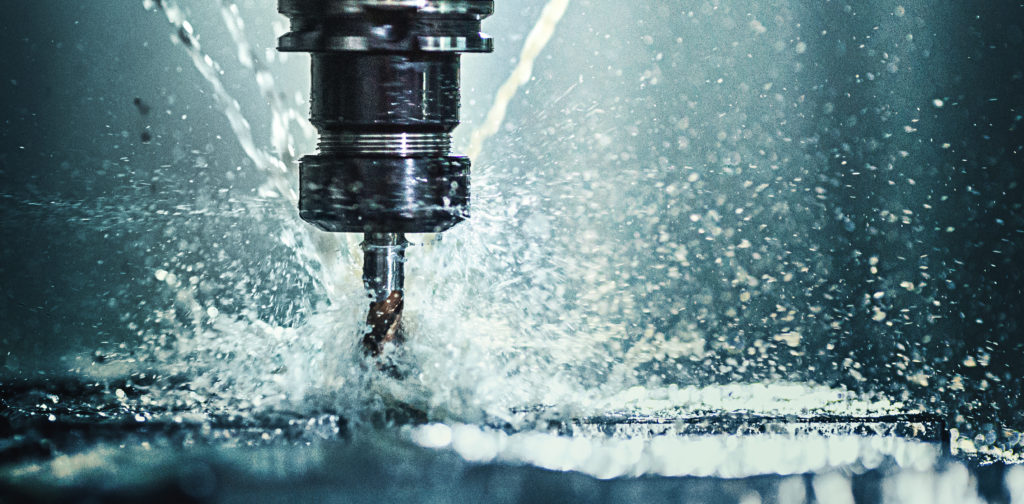Advanced Fasteners and Machining Techniques for Custom-made Production
Advanced Fasteners and Machining Techniques for Custom-made Production
Blog Article
Unveiling the Intricacies of Fasteners and Machining Processes for Optimum Efficiency
In the realm of engineering and production, the option of bolts and the intricacies of machining procedures play a crucial role in determining the ultimate performance and toughness of a product. From the seemingly simple task of choosing the right kind of bolt to the facility accuracy machining methods employed, every step in this procedure demands thorough focus to information. As we start this expedition into the globe of bolts and machining, we will uncover the refined yet essential variables that can dramatically affect the efficiency and top quality of the last item, dropping light on the frequently forgotten elements that can make all the distinction in attaining optimal performance.

Significance of Appropriate Fastener Choice
Choosing the proper bolts is crucial in guaranteeing the architectural stability and durability of any mechanical assembly. Bolts play a basic function in holding elements together safely, with the best option contributing substantially to the general performance and reliability of the assembly. When picking bolts, aspects such as material compatibility, environmental problems, load-bearing capacity, and convenience of setup must be meticulously thought about to assure ideal performance.
Incorrect fastener choice can lead to a series of concerns, including helping to loosen, rust, and even architectural failure. Making use of fasteners that are not matched to the particular needs of the assembly can compromise its capability and position safety and security dangers. Therefore, designers and developers should meticulously evaluate the application requires and pick bolts that fulfill or surpass the essential requirements and requirements.
Additionally, the correct fastener option process includes evaluating the joint layout, anticipated lots, vibration levels, and possible thermal growth or contraction to make sure that the chosen fasteners can hold up against the operating conditions efficiently. By focusing on proper fastener choice, manufacturers can boost the top quality, longevity, and performance of their mechanical assemblies.
Kinds and Characteristics of Fasteners
A vital element of mechanical assemblies lies in recognizing the varied kinds and one-of-a-kind characteristics of bolts made use of in different commercial applications. Fasteners are essential elements that hold structures together, making sure security and performance.
Screws are threaded fasteners that are typically used to join two or even more parts with each other. Bolts resemble screws but are generally used with a nut to develop a safe and secure joint. Nuts are inside threaded bolts that mate with bolts to hold elements together. Washers are slim plates that disperse the load of a bolt, avoiding damages to the material being attached. Rivets are long-term bolts that are hammered or pressed right into place. Pins are utilized for placement or to protect parts briefly.
Understanding the qualities of each sort of fastener is essential for choosing the best one for a certain application, guaranteeing optimum efficiency and integrity of the mechanical setting up. Fasteners and Machining.
Accuracy Machining Methods for Efficiency
The elaborate design needs of numerous bolts require employing accuracy machining strategies for ideal efficiency in manufacturing procedures. Precision machining is important in guaranteeing that fasteners fulfill the precise specs required for their desired application. One of the primary strategies utilized in precision machining is Computer system Numerical Control (CNC) machining, which makes it possible for high degrees of accuracy and repeatability in the manufacturing of bolts. CNC devices are qualified of performing intricate cuts and shaping operations with marginal human intervention, leading to raised effectiveness and consistency in the manufacturing procedure.
In my sources enhancement to CNC machining, other precision strategies such as grinding, milling, and transforming are typically used to achieve the tight resistances required for bolts. These techniques enable producers to create bolts with smooth surface areas, accurate dimensions, and high architectural integrity. By utilizing accuracy machining techniques, producers can boost the high quality of fasteners, minimize material waste, and enhance total production effectiveness. Furthermore, the use of innovative machining processes assists ensure that fasteners fulfill industry requirements and customer assumptions for efficiency and dependability.

Variables Affecting Machining Process Efficiency
Different variables play a substantial duty in determining the performance of machining processes in the manufacturing of fasteners. Enhancing these specifications based on the certain needs of the bolt being created is key to achieving accurate and economical machining.
Maker strength and security likewise play a vital duty in figuring out machining procedure performance. A steady device with minimal vibrations can boost precision and protect against device wear, causing far better general performance. Additionally, the skill and experience of the machine driver can not be taken too lightly. An experienced operator can make real-time adjustments, troubleshoot issues successfully, and make sure that the machining process runs smoothly, inevitably influencing the last quality of the bolt.

Top Quality Control Actions in Production
Factors influencing machining process performance, such as cutting tool selection have a peek at this website and machine stability, directly effect the application of quality assurance procedures in production. Quality assurance procedures are crucial in ensuring that products fulfill the called for specifications and criteria. In the production process, various techniques are employed to preserve high quality requirements. Evaluation and testing play an important role in identifying any inconsistencies from the wanted end result. Routine maintenance of machining equipment is additionally essential to maintain high quality control. Calibration of equipments and tools is required to ensure exact and exact production processes. In addition, carrying out standardized operating procedures and methods can assist in maintaining uniformity and high quality throughout the production line. Quality assurance determines not just concentrate on the end product but also on every stage of the manufacturing procedure to stop mistakes and flaws. By sticking to stringent top quality control steps, suppliers can improve client fulfillment, build an online reputation for dependability, and eventually attain ideal performance in their machining procedures.
Conclusion
In verdict, selecting the ideal bolts and using precision machining methods are necessary for optimum performance in producing processes. Recognizing the types and attributes of bolts, along with aspects affecting machining procedure efficiency, can result in improved performance and quality assurance actions. By taking note of these ins and outs, suppliers can accomplish greater levels of performance and dependability in their items.
In visit the site the realm of design and manufacturing, the choice of fasteners and the intricacies of machining processes play an essential duty in determining the best efficiency and longevity of an item (Fasteners and Machining). One of the main methods used in accuracy machining is Computer Numerical Control (CNC) machining, which enables high degrees of precision and repeatability in the manufacturing of bolts. The usage of sophisticated machining processes helps guarantee that bolts fulfill sector requirements and consumer assumptions for performance and integrity
In final thought, selecting the appropriate fasteners and utilizing accuracy machining techniques are essential for optimum performance in making processes. Understanding the kinds and characteristics of bolts, along with elements affecting machining process efficiency, can lead to improved performance and high quality control actions.
Report this page